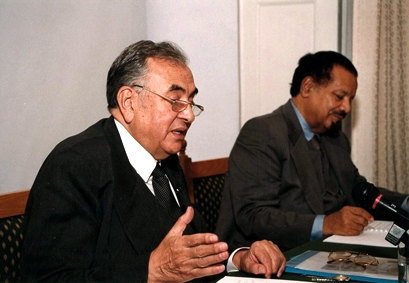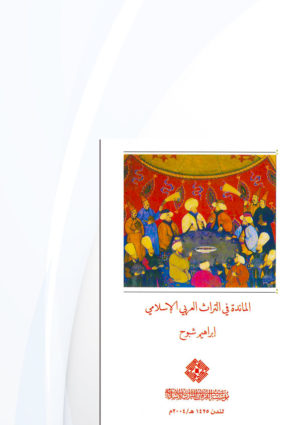Professor Ibrahim Chabbouh, member of the Board of Experts of Al-Furqan Foundation delivered a lecture on 27th September 2001 on “The Art and Significance of Islamic Cuisine” at Al-Furqan Islamic Heritage Foundation's headquarters, Eagle House in Wimbledon, London.
The title of Professor Chabbouhs lecture was very fitting and appropriate. Writers on the subject normally use the term “art of cooking”, restricting their approach to the material and practical aspects of the preparation of food, ignoring its cultural context. Professor Chabbouh offered an alternative approach, which broke through the boundaries of cooking and encompassed the manner of eating, as well as the social and ethical values involved in the making and consumption of food.
The lecture started from the very beginning, from cultivation. Islamic sources dealt with all aspects of cultivation: water, horticulture of scented flowers and productive trees and farming of crops. Examples were the “Kitab al-Filahah” by al-Ishbili and other books written by Arab explorers on trade and the importation of spices from the east.
He then dealt with utensils, the distinguishing characteristics of Islamic ceramics and the making of plates, bowls and cooking pots. The manufacture of these utensils was subject to stringent control, to ensure that no harmful leaded materials were used in the process.

Professor Chabbouh highlighted the interest shown by Muslim scholars in identifying the characteristics and nutritional value of every single plant. Starting with the translation of classical Greek works, they moved on to make great progress in the further development of the subject. Various books on food were written, for example, Ishaq Ibn Sulayman’s book and the book written by Ibn Zuhr for the caliph al-Muwahhidi.
Writing on cuisine was connected with the understanding of the senses of taste and smell. This was an area dealt with by physicians in their treatises. Literary works described food, its containers and the context of its presentation. There were ample examples in the Maqamat, in the “Thousand and One Nights” as well as in the poetry of Ibn al-Mu’tazz and Kushajim.
Particular mention was made of a number of works on the art of cooking known to Islamic Arab civilisation. Examples of these are “Fann al-Tabikh” by Muhammad Hasan al-Baghdadi, printed in Iraq in 1934 and translated into English by Arberry, ‘al-Wasla ila al-Habib bil Tayyibat wa al-Tib”, said to be by Ibn al-Adim and “Kitab al-Tabikh” by Ibn Sayyar al-Warraq.
Among the good practices emphasised by these books were that cooks should always observe cleanliness and should be God-fearing. There was a Hisba, an official control on food, its ingredients and production. Eating itself had a social context in which certain manners and obligatory rules were to be observed.
Concluding his lecture, Professor Chabbouh showed the audience examples of manuscripts about food and ceramics and utensils used in the preparation and presentation of food.


